- Home›
- Healthy Living›
- 13 Side Effects Of Tobacco: A Call To Action On World No Tobacco Day
13 Side Effects Of Tobacco: A Call To Action On World No Tobacco Day
By: Priyanka Maheshwari Thu, 25 May 2023 11:37:51

World No Tobacco Day is observed globally on May 31st each year. It is an initiative led by the World Health Organization (WHO) to raise awareness about the health risks associated with tobacco use and advocate for effective tobacco control policies. The day aims to encourage individuals, communities, and governments to take action to reduce tobacco consumption and promote a tobacco-free lifestyle.
The primary objectives of World No Tobacco Day are to:
- Raise awareness about the harmful effects of tobacco use on health, including both active and passive smoking.
- Highlight the link between tobacco use and various diseases, such as cancer, cardiovascular diseases, respiratory problems, and more.
- Promote tobacco control policies and advocate for stronger measures to reduce tobacco consumption.
- Encourage individuals to quit smoking and support them in their journey towards a tobacco-free life.
- Mobilize communities, organizations, and governments to implement effective strategies for tobacco control.
In this article, we will explore 13 side effects of tobacco, highlighting the urgent need to combat this addiction and promote a tobacco-free world.
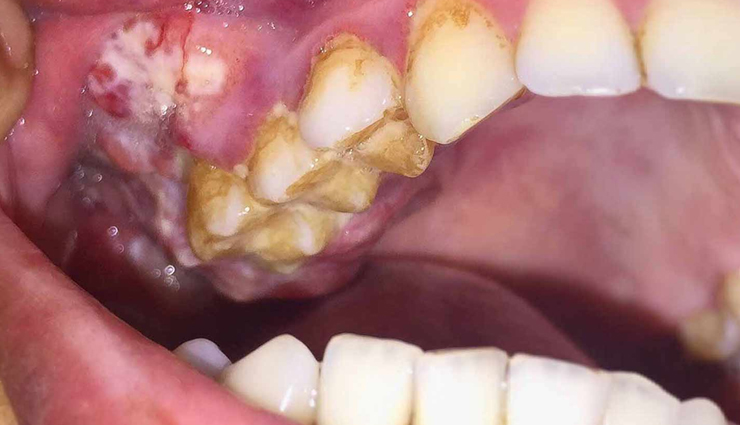
# Increased Risk of Cancer
Tobacco use is strongly linked to an increased risk of various types of cancer. The chemicals present in tobacco, particularly when it is smoked, release harmful substances that can damage DNA and lead to the development of cancerous cells. Here are some cancers that have a significant association with tobacco use:
Lung Cancer:
Lung cancer is the most well-known and deadly cancer associated with tobacco use. The majority of lung cancer cases are caused by smoking cigarettes, cigars, or pipes. The carcinogens present in tobacco smoke directly damage the cells in the lungs, leading to the formation of tumors.
Mouth and Throat Cancers:
Smoking tobacco, including cigarettes and chewing tobacco, greatly increases the risk of cancers affecting the mouth, throat, and oral cavity. These include cancers of the lips, tongue, cheeks, gums, and throat. The harmful chemicals in tobacco come into direct contact with the oral tissues, causing cellular mutations and the development of cancerous growths.
Esophageal Cancer:
Regular tobacco use, particularly when combined with heavy alcohol consumption, significantly raises the risk of esophageal cancer. The chemicals in tobacco smoke can irritate and damage the lining of the esophagus, leading to the formation of cancer cells.
Pancreatic Cancer:
Smoking is a known risk factor for pancreatic cancer. The toxins in tobacco smoke can damage the pancreas and its cells, increasing the likelihood of developing this aggressive form of cancer.
Kidney Cancer:
Tobacco use has been associated with an increased risk of kidney cancer. The harmful substances in tobacco can affect the kidneys' filtering function and promote the growth of cancer cells within the organ.
Bladder Cancer:
Smokers are more susceptible to bladder cancer compared to non-smokers. The chemicals in tobacco smoke are filtered through the kidneys and concentrated in the urine, leading to direct exposure of the bladder tissues to carcinogens.
Cervical Cancer:
In women, tobacco use has been linked to an increased risk of cervical cancer. Smoking weakens the immune system and affects the body's ability to fight off human papillomavirus (HPV) infections, which is a significant risk factor for cervical cancer.
Colorectal Cancer:
There is evidence suggesting that smoking tobacco may contribute to an increased risk of colorectal cancer. The harmful substances in tobacco smoke can reach the digestive system, promoting the growth of cancer cells in the colon or rectum.

# Respiratory Problems
Tobacco use has profound negative effects on the respiratory system, leading to a wide range of respiratory problems. Whether smoked or chewed, tobacco exposes the lungs and airways to harmful chemicals that can cause significant damage. Here are some respiratory problems associated with tobacco use:
Chronic Obstructive Pulmonary Disease (COPD):
COPD is a progressive lung disease that encompasses conditions such as chronic bronchitis and emphysema. Smoking is the leading cause of COPD. The chemicals in tobacco smoke irritate and inflame the airways, causing chronic coughing, excessive mucus production, and difficulty breathing.
Chronic Bronchitis:
Tobacco smoke irritates and inflames the bronchial tubes, leading to chronic bronchitis. This condition is characterized by a persistent cough, excessive production of mucus, wheezing, and shortness of breath. Over time, the airways become scarred and narrowed, making it increasingly difficult to breathe.
Emphysema:
Emphysema is a condition in which the air sacs in the lungs (alveoli) become damaged and lose their elasticity. Smoking is a primary cause of emphysema. The toxins in tobacco smoke destroy the alveoli, reducing the surface area available for oxygen exchange. This results in shortness of breath, wheezing, and a feeling of constant breathlessness.
Increased Risk of Respiratory Infections:
Smokers are more susceptible to respiratory infections such as pneumonia, bronchitis, and influenza. Tobacco smoke damages the cilia (tiny hair-like structures) in the airways that help clear mucus and foreign particles. As a result, the respiratory system becomes more vulnerable to infection, leading to frequent bouts of respiratory illnesses.
Worsening of Asthma:
If you have asthma, smoking or exposure to secondhand smoke can worsen your symptoms. Tobacco smoke irritates and inflames the airways, triggering asthma attacks and making it harder to control the condition. Smoking also reduces the effectiveness of asthma medications.
Increased Risk of Tuberculosis (TB):
Smoking compromises the immune system's ability to fight off infections, including tuberculosis (TB). Smokers are more likely to contract TB and have more severe cases of the disease. Moreover, smoking increases the risk of developing drug-resistant strains of TB.
Reduced Lung Function:
Tobacco use leads to a decline in lung function over time. The harmful chemicals in tobacco smoke cause damage to the lung tissues and air sacs, reducing their ability to expand and contract effectively. This results in decreased lung capacity and impaired oxygen intake.
Development of Respiratory Cancers:
As mentioned earlier, tobacco use is strongly associated with lung cancer. It is the leading cause of this deadly disease. Additionally, smoking increases the risk of other respiratory cancers, including cancers of the throat, mouth, larynx, and esophagus.
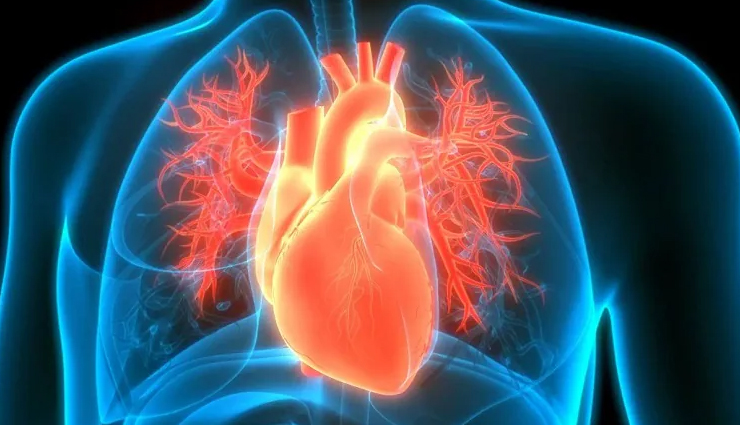
# Cardiovascular Diseases
Tobacco use is a major contributor to the development of various cardiovascular diseases. The chemicals present in tobacco smoke have a detrimental effect on the cardiovascular system, increasing the risk of serious health conditions. Here are some cardiovascular diseases associated with tobacco use:
Coronary Artery Disease (CAD):
Tobacco use is a significant risk factor for CAD, the most common type of heart disease. The chemicals in tobacco smoke damage the inner lining of the coronary arteries, leading to the formation of fatty deposits called plaque. This buildup narrows the arteries, reducing blood flow to the heart. Over time, it can result in chest pain (angina), heart attacks, and heart failure.
Heart Attacks:
Smoking is a leading cause of heart attacks. The toxic chemicals in tobacco smoke trigger the formation of blood clots and increase the likelihood of plaque rupture in the coronary arteries. This can result in a sudden blockage of blood flow to the heart, leading to a heart attack.
Stroke:
Tobacco use significantly raises the risk of stroke. Smoking damages the blood vessels and promotes the formation of blood clots. These clots can block the blood supply to the brain, causing an ischemic stroke. Smoking also increases the risk of hemorrhagic stroke, which occurs when a weakened blood vessel ruptures and causes bleeding in the brain.
Peripheral Artery Disease (PAD):
Smoking is a major risk factor for PAD, a condition characterized by the narrowing and blockage of blood vessels outside the heart and brain. The reduced blood flow to the limbs can result in pain, numbness, tissue damage, and impaired wound healing. In severe cases, PAD can lead to gangrene and the need for limb amputation.
Aortic Aneurysm:
Tobacco use increases the risk of developing an aortic aneurysm. Aneurysms occur when a weakened area of the aorta (the body's largest artery) bulges and can potentially rupture. Smoking weakens the walls of the blood vessels, making them more susceptible to aneurysm formation and rupture.
Irregular Heartbeat (Arrhythmia):
Smoking has been associated with the development of arrhythmias, which are abnormal heart rhythms. The nicotine in tobacco can disrupt the electrical signals in the heart, leading to irregular heartbeats, palpitations, and an increased risk of atrial fibrillation, a common type of arrhythmia.
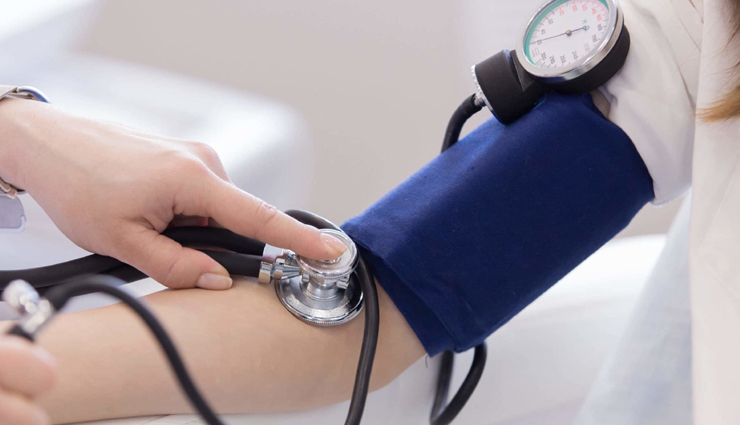
# Increased Blood Pressure
Tobacco use is known to increase blood pressure levels, both in the short term and over time. The chemicals present in tobacco smoke, particularly nicotine, have a direct impact on the cardiovascular system, leading to elevated blood pressure. Here's how tobacco contributes to increased blood pressure:
Nicotine Constriction:
Nicotine, a highly addictive substance found in tobacco, causes blood vessels to constrict or narrow. This constriction restricts the flow of blood through the vessels, leading to increased resistance and higher blood pressure. The constriction effect of nicotine can be observed immediately after smoking a cigarette or using other tobacco products.
Increased Heart Rate:
Nicotine stimulates the release of adrenaline, a hormone that increases heart rate and contractility. When the heart beats faster, it pumps blood with greater force, resulting in increased blood pressure. This temporary spike in heart rate and blood pressure can be observed shortly after tobacco use.
Activation of the Sympathetic Nervous System:
Tobacco use activates the sympathetic nervous system, which is responsible for regulating various involuntary body functions, including blood pressure. The activation of this system by nicotine leads to the release of stress hormones like adrenaline and noradrenaline, which constrict blood vessels and elevate blood pressure.
Damage to Blood Vessels:
Long-term tobacco use damages the inner lining of blood vessels, promoting the development of atherosclerosis (hardening and narrowing of the arteries). Atherosclerosis further contributes to increased blood pressure by reducing the flexibility and elasticity of blood vessels, making it more difficult for them to expand and accommodate blood flow.
Increased Risk of Hypertension:
Hypertension, or high blood pressure, is a chronic medical condition characterized by sustained elevated blood pressure levels. Tobacco use is a significant risk factor for the development of hypertension. The continuous exposure to nicotine and other harmful chemicals in tobacco products leads to persistent constriction of blood vessels and prolonged elevation in blood pressure.
Compromised Blood Flow:
The constriction of blood vessels and the damage caused by tobacco use can compromise blood flow to vital organs and tissues. Reduced blood flow to the heart, brain, and other organs can lead to further health complications, including heart attacks, strokes, and organ damage.
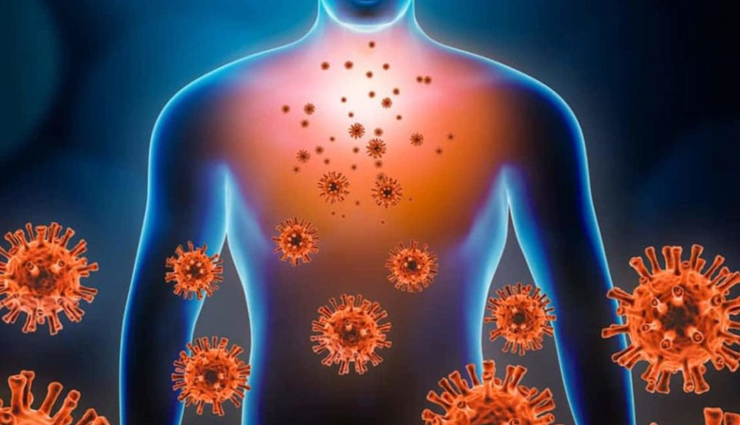
# Weakened Immune System
Tobacco use has a significant impact on the immune system, weakening its ability to defend against infections and diseases. The harmful chemicals in tobacco smoke can suppress and impair various components of the immune system, leading to increased vulnerability to infections and reduced overall immune function. Here's how tobacco weakens the immune system:
Impaired White Blood Cell Function:
White blood cells, including neutrophils and macrophages, play a crucial role in the immune response by identifying and destroying pathogens, such as bacteria and viruses. Tobacco smoke exposure hampers the function of these cells, impairing their ability to effectively combat infections.
Reduced Antibody Response:
Tobacco use can negatively impact the production and effectiveness of antibodies, which are proteins that neutralize and help eliminate harmful substances or organisms in the body. Smoking tobacco can impair the immune system's ability to generate a robust antibody response, making individuals more susceptible to infections.
Increased Susceptibility to Respiratory Infections:
Smokers are more prone to respiratory infections such as pneumonia, bronchitis, and influenza. Tobacco smoke damages the cilia—hair-like structures in the respiratory tract that help sweep away mucus and pathogens. This impairment hinders the natural defense mechanism of the respiratory system, making it easier for infections to take hold.
Delayed Wound Healing:
Tobacco use can delay the healing process of wounds, whether they are surgical incisions, injuries, or ulcers. The chemicals in tobacco smoke restrict blood vessels, impairing blood flow to the wound site. This diminishes the delivery of oxygen and nutrients necessary for proper healing and increases the risk of infection.
Increased Risk of Infections:
Smokers have an increased susceptibility to various infections, including respiratory tract infections, urinary tract infections, skin infections, and oral infections. The compromised immune system resulting from tobacco use makes it harder for the body to fight off invading pathogens, leading to more frequent and severe infections.
Impaired Vaccine Response:
Tobacco use can reduce the effectiveness of vaccines. Smoking interferes with the immune system's ability to generate a robust response to vaccines, diminishing their protective effects. This can result in decreased vaccine efficacy and a higher risk of vaccine-preventable diseases.
Enhanced Inflammatory Response:
Tobacco smoke triggers chronic inflammation throughout the body. Inflammation is an immune response aimed at eliminating harmful stimuli. However, prolonged and excessive inflammation can be detrimental to overall health, contributing to various chronic diseases and further compromising immune function.
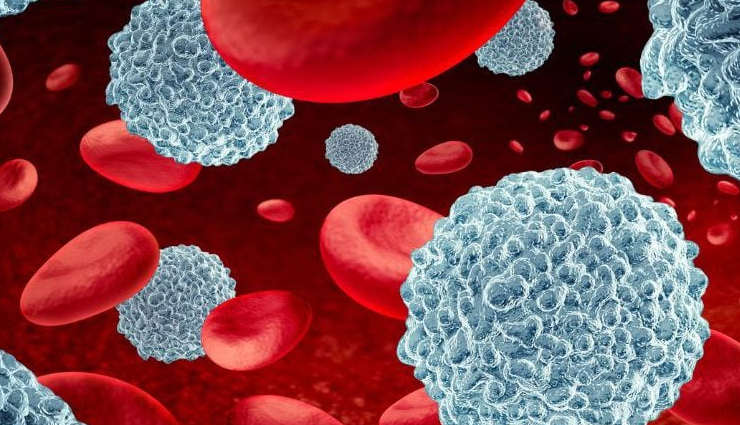
# Impaired White Blood Cell Function
Tobacco use has been shown to impair the function of white blood cells, which are essential components of the immune system responsible for defending the body against infections. The harmful chemicals in tobacco smoke can directly affect the production, activity, and function of white blood cells, compromising the immune response. Here's how tobacco impairs white blood cell function:
Neutrophil Dysfunction:
Neutrophils are a type of white blood cell that plays a crucial role in the immune system's initial response to infections. They help eliminate pathogens by engulfing and destroying them. Tobacco smoke exposure has been found to impair the function of neutrophils, reducing their ability to effectively combat invading bacteria and other pathogens.
Macrophage Impairment:
Macrophages are another type of white blood cell that engulfs and destroys foreign substances, infected cells, and cellular debris. Tobacco smoke exposure can impair the activity and function of macrophages, limiting their ability to clear pathogens and maintain tissue health.
Reduced Phagocytic Activity:
Phagocytosis is the process by which white blood cells engulf and digest pathogens. Tobacco smoke can interfere with this crucial function, reducing the phagocytic activity of white blood cells. As a result, the ability of white blood cells to eliminate bacteria, viruses, and other harmful substances is compromised.
Impaired Cytokine Production:
Cytokines are signaling molecules produced by white blood cells that regulate the immune response. They coordinate the activity of various immune cells and help combat infections. Tobacco smoke exposure can disrupt the production and release of cytokines, leading to an altered immune response and impaired communication between immune cells.
Oxidative Stress:
Tobacco smoke contains numerous reactive chemicals and free radicals that can induce oxidative stress in the body. Oxidative stress can damage white blood cells and hinder their normal function. It can also promote inflammation and compromise the immune system's ability to mount an effective defense against pathogens.
Altered Cell Signaling:
Tobacco smoke exposure can interfere with the complex signaling pathways that regulate white blood cell function. The chemicals in tobacco smoke can disrupt the communication between immune cells, leading to dysregulated immune responses and impaired coordination in combating infections.
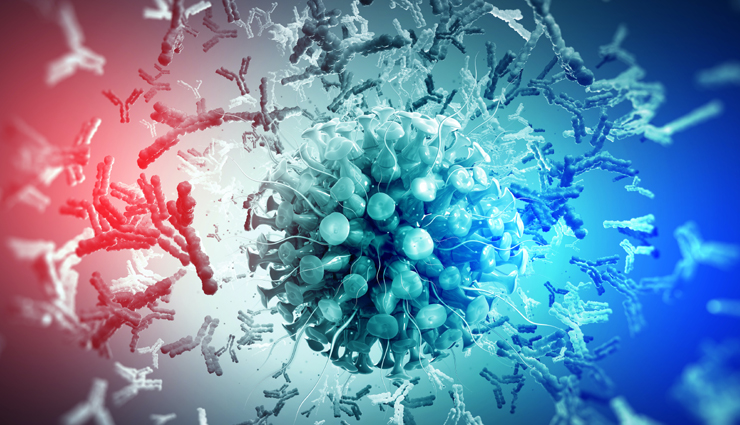
# Reduced Antibody Response
Tobacco use can significantly reduce the body's antibody response, impairing the immune system's ability to effectively fight infections and provide long-lasting immunity. Antibodies are proteins produced by white blood cells, specifically B lymphocytes, in response to the presence of foreign substances (antigens) such as bacteria, viruses, or other pathogens. Here's how tobacco reduces the antibody response:
Suppressed B Cell Function:
Tobacco smoke exposure can suppress the function of B cells, which are responsible for producing antibodies. The chemicals in tobacco smoke, particularly nicotine, can interfere with the normal development and activation of B cells, leading to a reduced production of antibodies.
Altered Antibody Structure and Function:
The components of tobacco smoke can directly affect the structure and function of antibodies. Tobacco toxins can modify the antibodies' molecular structure, reducing their ability to recognize and bind to specific antigens. This alteration compromises the effectiveness of antibodies in neutralizing pathogens and clearing infections.
Decreased Antibody Production:
Tobacco use can decrease the production of antibodies in response to infections or vaccinations. The chemicals in tobacco smoke can disrupt the signaling pathways and processes involved in antibody production, leading to reduced antibody levels in the bloodstream.
Impaired Memory B Cell Formation:
Memory B cells are a subset of B cells that "remember" previous infections or vaccinations and rapidly produce specific antibodies upon re-exposure to the same pathogen. Tobacco smoke can impair the formation and function of memory B cells, compromising the ability of the immune system to mount a quick and effective antibody response upon encountering a previously encountered antigen.
Reduced Vaccine Efficacy:
Smoking tobacco can negatively impact the effectiveness of vaccines that rely on the production of antibodies for protection. The impaired antibody response resulting from tobacco use can diminish the vaccine's ability to induce a robust immune response and provide adequate protection against specific infections or diseases.
Altered Immunoglobulin Levels:
Immunoglobulins, or antibodies, are categorized into different classes (IgG, IgA, IgM, IgE, IgD), each with distinct roles in immune defense. Tobacco use can disrupt the normal balance and levels of different immunoglobulins, affecting the immune system's ability to mount an appropriate antibody response against specific antigens.
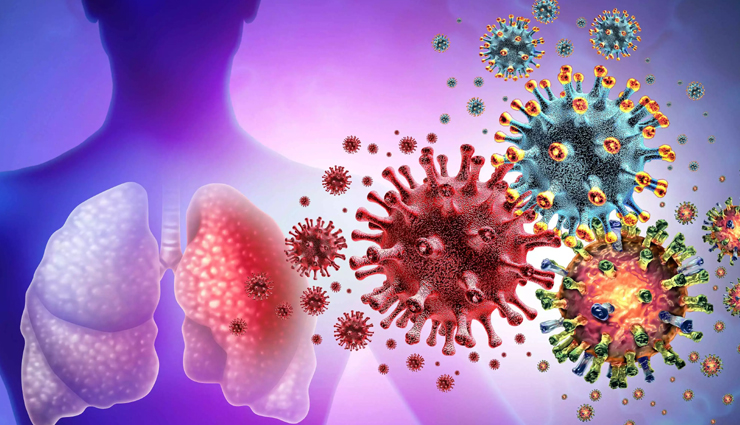
# Increased Susceptibility to Respiratory Infections
Tobacco use significantly increases susceptibility to respiratory infections, including viral and bacterial respiratory illnesses. Smoking and exposure to secondhand smoke weaken the immune system's defenses in the respiratory tract, impairing its ability to prevent and fight off infections. Here's how tobacco increases susceptibility to respiratory infections:
Damage to the Respiratory System:
Tobacco smoke contains numerous toxic chemicals that directly damage the respiratory system. The smoke irritates the airways, causing inflammation and impairing the function of cilia, tiny hair-like structures that help remove mucus and trap foreign particles. The damage to the respiratory system makes it easier for pathogens to enter and cause infections.
Impaired Mucociliary Clearance:
The cilia in the respiratory tract play a vital role in sweeping away mucus and trapped pathogens from the lungs. Tobacco smoke disrupts the normal functioning of cilia, reducing their ability to clear mucus and pathogens effectively. This impairment compromises the first line of defense against respiratory infections.
Weakened Immune Response:
Tobacco smoke exposure weakens the immune system's response in the respiratory tract. The toxic chemicals in smoke impair the function of white blood cells, such as neutrophils and macrophages, which are responsible for detecting and eliminating pathogens. This weakened immune response allows respiratory infections to take hold and spread more easily.
Increased Viral Replication:
Smoking tobacco has been associated with increased viral replication in the respiratory tract. Studies have shown that smoking facilitates viral entry and replication, particularly in the case of respiratory viruses such as influenza and respiratory syncytial virus (RSV). This increased viral replication enhances the severity and duration of respiratory infections.
Reduced Antimicrobial Activity:
Tobacco smoke diminishes the antimicrobial activity in the respiratory tract. The toxic components of smoke impair the production and effectiveness of antimicrobial peptides and proteins that help fight off infections. This reduction in antimicrobial activity leaves the respiratory tract more vulnerable to bacterial and viral invaders.
Impaired Lung Function:
Smoking damages lung tissues and reduces lung function. Chronic smokers often experience decreased lung capacity, compromised airway function, and chronic respiratory conditions such as chronic obstructive pulmonary disease (COPD). These conditions weaken the respiratory system and increase the susceptibility to respiratory infections.
Impaired Immune Memory:
Tobacco use can interfere with the development of immune memory in the respiratory tract. Immune memory allows the immune system to recognize and mount a more rapid and effective response to previously encountered pathogens. Smoking disrupts this process, making individuals more susceptible to recurrent respiratory infections.

# Delayed Wound Healing
Tobacco use can have a detrimental impact on the wound healing process, leading to delayed healing and increased complications. Whether it's a surgical incision, a minor cut, or a chronic wound, tobacco smoke exposure can impair various stages of wound healing. Here's how tobacco delays wound healing:
Restricted Blood Flow:
Tobacco smoke contains chemicals that constrict blood vessels, reducing blood flow to the wound site. Adequate blood flow is crucial for delivering oxygen, nutrients, and immune cells to the wound area, promoting healing. The restricted blood flow resulting from tobacco use hampers these essential processes, delaying wound healing.
Decreased Oxygen Supply:
Oxygen is vital for wound healing as it supports the metabolic activities of cells involved in the healing process. Tobacco smoke decreases the amount of oxygen that reaches the wound site due to vasoconstriction. Insufficient oxygen supply compromises cell function, impairs tissue regeneration, and slows down wound healing.
Impaired Cellular Function:
Tobacco smoke contains toxic chemicals that can directly damage cells involved in wound healing, such as fibroblasts and epithelial cells. Fibroblasts are responsible for producing collagen, a key component of the extracellular matrix that provides structural support during healing. Epithelial cells form a protective layer over the wound. Tobacco-induced cellular damage inhibits their proper function, leading to delayed healing.
Increased Inflammation:
Tobacco use triggers chronic inflammation throughout the body, including at the wound site. While inflammation is a natural part of the healing process, excessive and prolonged inflammation can impede wound healing. Tobacco-induced inflammation can disrupt the coordinated cellular responses necessary for efficient healing, leading to delayed wound closure.
Compromised Immune Response:
Tobacco smoke exposure weakens the immune system's ability to respond effectively to wounds. The toxic chemicals in tobacco impair the function of immune cells, such as neutrophils and macrophages, which are involved in the early stages of wound healing. This compromised immune response prolongs the inflammatory phase and slows down subsequent healing processes.
Increased Risk of Infection:
Tobacco use increases the risk of wound infection. The chemicals in tobacco smoke impair the body's defense mechanisms, making it easier for bacteria and other microorganisms to colonize the wound site. Infections further delay wound healing and can lead to more severe complications.
Poor Scar Formation:
Tobacco use can affect the quality of scar formation during wound healing. Smoking disrupts collagen synthesis and remodeling, leading to abnormal scar formation. Smokers are more prone to developing hypertrophic scars or keloids, which are raised, thickened, and often cosmetically undesirable.
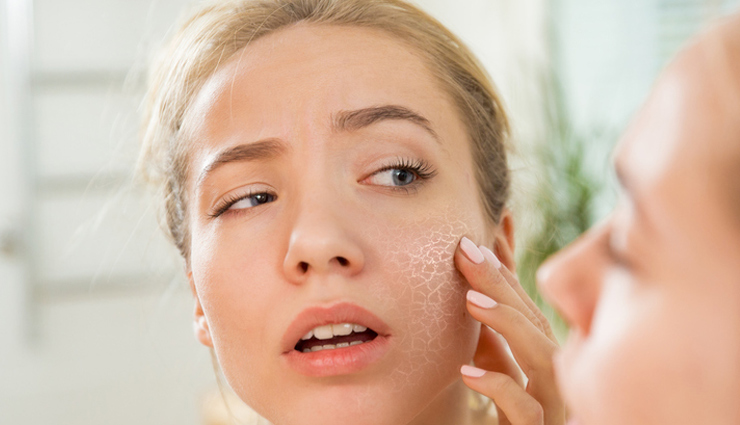
# Increased Risk of Infections
Tobacco use increases the risk of various infections throughout the body, including respiratory, oral, urinary, and skin infections. The toxic chemicals in tobacco smoke weaken the immune system, impairing its ability to fight off invading pathogens. Here's how tobacco increases the risk of infections:
Respiratory Infections:
Smoking tobacco significantly raises the risk of respiratory infections such as pneumonia, bronchitis, and influenza. The toxic components of tobacco smoke damage the respiratory tract, impairing the natural defense mechanisms like cilia and mucociliary clearance. This makes it easier for bacteria and viruses to invade the respiratory system and cause infections.
Oral Infections:
Tobacco use is associated with an increased risk of oral infections, including gum disease (periodontitis) and oral candidiasis (thrush). Smoking weakens the immune response in the oral cavity, allowing bacteria and fungi to thrive and cause infections. Additionally, smoking reduces blood flow to the gums, hindering the healing of gum tissue and making it more susceptible to infection.
Urinary Tract Infections (UTIs):
Smokers have a higher risk of urinary tract infections. The toxic chemicals in tobacco smoke can irritate the urinary tract and impair the body's defense mechanisms, making it easier for bacteria to colonize and cause infections in the urinary system.
Skin Infections:
Tobacco use increases the susceptibility to skin infections. The toxins in tobacco smoke compromise the skin's natural barrier function, making it more vulnerable to bacterial and fungal infections. Smokers are more prone to conditions such as cellulitis, impetigo, and fungal skin infections.
Surgical Site Infections:
Smoking before or after surgery increases the risk of surgical site infections. Tobacco smoke impairs blood flow, oxygen supply, and immune function, all of which are crucial for proper wound healing and preventing infection. Smokers are more likely to experience complications, including infections, after surgical procedures.

# Oral Health Problems
Tobacco use has significant detrimental effects on oral health, leading to various oral health problems and increasing the risk of developing serious dental conditions. Whether it's smoking cigarettes, cigars, or using smokeless tobacco products, here are some oral health problems associated with tobacco:
Gum Disease (Periodontal Disease):
Tobacco use is one of the leading risk factors for gum disease, also known as periodontal disease. Smoking reduces blood flow to the gums, impairs the immune response, and slows down the healing process. These factors contribute to the accumulation of plaque and tartar, leading to inflammation, gum recession, and eventual tooth loss.
Oral Cancer:
Tobacco use, particularly smoking, significantly increases the risk of developing oral cancer. The harmful chemicals in tobacco smoke can cause genetic mutations and damage to the cells in the mouth, leading to the development of cancerous tumors. Oral cancer can affect the lips, tongue, cheeks, gums, and throat, and it can be life-threatening if not detected and treated early.
Tooth Discoloration and Staining:
The tar and nicotine present in tobacco products can cause severe tooth discoloration and staining. Over time, teeth may become yellow or brown in color, affecting one's smile and overall appearance. These stains are challenging to remove through regular brushing and may require professional teeth whitening treatments.
Bad Breath (Halitosis):
Tobacco use is a common cause of persistent bad breath. The chemicals in tobacco smoke leave a foul odor in the mouth and throat, which can be difficult to mask with mouthwash or mints. Additionally, smoking can dry out the mouth, reducing saliva flow and creating an environment where odor-causing bacteria thrive.
Tooth Decay:
Smokers are at an increased risk of developing tooth decay. Tobacco use contributes to the buildup of plaque and tartar, which contain bacteria that produce acid and erode tooth enamel. The acidic environment created by smoking promotes the growth of cavity-causing bacteria, leading to tooth decay and cavities.
Gum Recession:
Tobacco use can cause gum recession, where the gum tissue gradually pulls away from the teeth, exposing the tooth roots. Gum recession not only affects the appearance of the smile but also increases tooth sensitivity and makes teeth more susceptible to decay and tooth loss.
Delayed Wound Healing:
Smoking tobacco delays the healing process after oral surgery, such as tooth extractions or oral implants. The toxic chemicals in tobacco smoke constrict blood vessels and impair blood flow, which is essential for proper wound healing. This can result in increased pain, swelling, and a higher risk of complications following oral surgery.

# Reproductive Health Issues
Tobacco use can have serious implications for reproductive health, affecting both males and females. The harmful chemicals in tobacco smoke can negatively impact fertility, pregnancy outcomes, and overall reproductive health. Here are some reproductive health issues associated with tobacco use:
Reduced Fertility:
Smoking can impair fertility in both men and women. In women, tobacco use can affect the quality of eggs, disrupt hormone levels, and lead to irregular menstrual cycles. In men, smoking can decrease sperm count, reduce sperm motility, and impair sperm function, making it more difficult to achieve pregnancy.
Increased Risk of Infertility:
Smoking increases the risk of infertility in both men and women. Women who smoke are more likely to experience difficulties in conceiving, while men who smoke have a higher prevalence of infertility compared to non-smokers. The toxic chemicals in tobacco smoke can damage reproductive organs and disrupt the delicate balance of hormones necessary for reproduction.
Complications during Pregnancy:
Smoking during pregnancy poses significant risks to both the mother and the developing fetus. Pregnant women who smoke are at a higher risk of complications such as miscarriage, ectopic pregnancy, placental abnormalities, and preterm birth. Smoking during pregnancy is also associated with low birth weight, which can lead to long-term health issues for the baby.
Increased Risk of Birth Defects:
Tobacco use during pregnancy increases the risk of birth defects in infants. The toxic substances in tobacco smoke can cross the placenta and affect fetal development. Babies born to mothers who smoke are at a higher risk of congenital abnormalities, including cleft lip and palate, heart defects, and developmental issues.
Impaired Sperm Quality:
Smoking has a detrimental impact on sperm quality and can increase the risk of genetic abnormalities in offspring. The toxic components of tobacco smoke can damage sperm DNA, leading to an increased risk of chromosomal abnormalities and genetic mutations. This can result in a higher incidence of birth defects and developmental disorders in children.
Erectile Dysfunction:
Smoking is a significant risk factor for erectile dysfunction (ED) in men. The toxic chemicals in tobacco smoke can damage blood vessels and impair blood flow to the penis, reducing the ability to achieve and maintain an erection. Quitting smoking can significantly improve erectile function and overall sexual health.
Secondhand Smoke Effects:
Exposure to secondhand smoke can also impact reproductive health. Non-smoking partners exposed to secondhand smoke may experience decreased fertility, increased risk of miscarriage, and adverse pregnancy outcomes. Children exposed to secondhand smoke are at higher risk of developmental issues, respiratory problems, and other health complications.
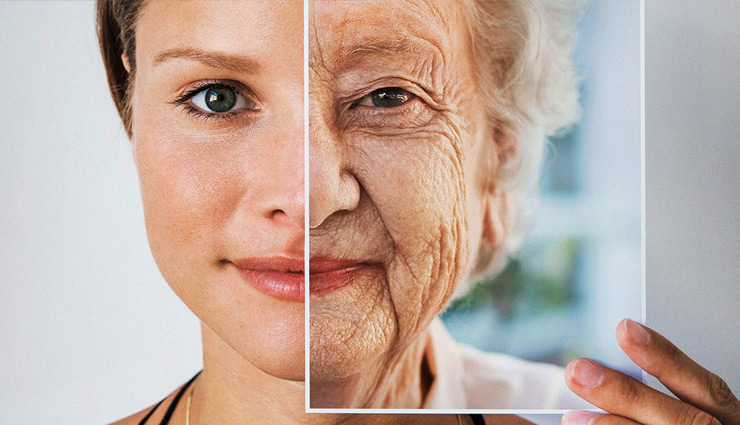
# Premature Aging
Tobacco use accelerates the aging process, leading to premature aging of the skin and other visible signs of aging. The harmful chemicals in tobacco smoke affect the skin's structure, elasticity, and overall health, resulting in various signs of premature aging. Here's how tobacco contributes to premature aging:
Wrinkles and Fine Lines:
Smoking tobacco is associated with the development of wrinkles and fine lines on the face, particularly around the mouth and eyes. The heat from the burning cigarette and the toxins in tobacco smoke generate oxidative stress, which damages collagen and elastin fibers in the skin. Collagen and elastin are essential proteins that maintain the skin's firmness and elasticity. When these fibers are damaged, the skin loses its ability to bounce back, resulting in the formation of wrinkles and fine lines.
Skin Discoloration and Uneven Tone:
Tobacco use can cause skin discoloration and an uneven skin tone. The chemicals in tobacco smoke disrupt the production and distribution of melanin, the pigment responsible for the skin's color. This can lead to patches of hyperpigmentation (dark spots) and uneven skin tone, giving the skin a dull and aged appearance.
Sagging and Loose Skin:
Smoking contributes to sagging and loose skin, particularly in the face and neck area. The toxins in tobacco smoke break down collagen and elastin fibers, which provide structural support to the skin. As a result, the skin loses its firmness and elasticity, leading to sagging, jowls, and a less defined facial contour.
Dull and Dehydrated Skin:
Tobacco smoke depletes the skin's moisture and disrupts its natural hydration levels. Smoking reduces blood flow to the skin and impairs oxygen and nutrient delivery, leading to a dull, dry, and dehydrated complexion. Dry skin is more prone to flakiness, rough texture, and a lackluster appearance.
Poor Wound Healing:
Tobacco use impairs the skin's ability to heal properly. The chemicals in tobacco smoke constrict blood vessels, reducing blood flow to the skin. This diminished blood flow hampers the delivery of essential nutrients and oxygen to the skin cells, slowing down the healing process of wounds, cuts, and blemishes. As a result, the skin may take longer to heal and may be more prone to scarring.
Pronounced Eye Bags and Dark Circles:
Smoking tobacco can contribute to the development of eye bags and dark circles under the eyes. The toxins in tobacco smoke can cause fluid retention and inflammation in the delicate skin around the eyes. This can result in puffy eye bags and dark circles, making the eyes appear tired and aged.





